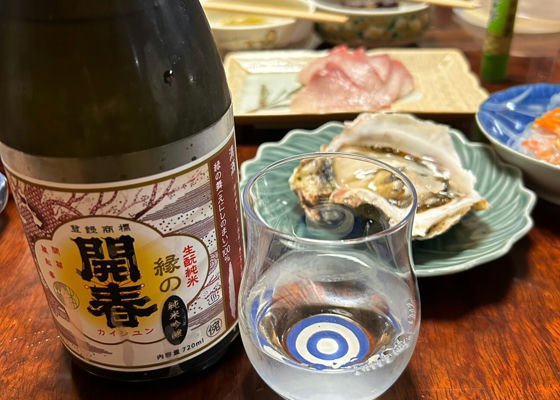
付喪神
The following is a list of the ingredients of the wine.
Rice: En-no-Mai
Percentage of polished rice: 50%.
Fermenter: No additives
Japanese Sake Degree: -3
Acidity: 2.3
Alcohol content: 15
Enishinomai is a relatively new variety of sake rice produced in Shimane Prefecture and officially named in February 1991. It is expected to be a high-quality sake rice that can be used to brew daiginjo and other types of sake.
Now, let's see what it tastes like: ......
A really faint yellowish color. The aroma is sour🍶 and the taste is fresh and sweet, like a melon or muscat, which is typical of ginjo. The beautiful acidity that is typical of "Kimoto" follows it. The taste is clean and refreshing, like water, while giving a sense of refinement. The bitterness that lingers in the mouth is a nice accent.
My daughter wanted to eat oysters, so we bought rock oysters. This time, we tried eating them raw. It was hard to open the oyster. But the taste was great.
The taste doubled when combined with yellowtail sashimi 🍶.
Japanese>English
ジェイ&ノビィ
Good morning, tsukemogami 😃.
Green Mai is a sake rice that I have never heard of before! How many types of sake rice are there 🤔?
Rock oysters 🦪 and yellowtail sashimi! Good entrée to complement sake 🍶 even more 🤗.
Japanese>English
付喪神
Good evening, Jay & Nobby 🍶.
I googled it. It seems there are 125 varieties of sake rice. How many varieties have we had so far 🤔.
There are also sake made from edible rice.
I had a hard time opening the raw oysters!
Japanese>English